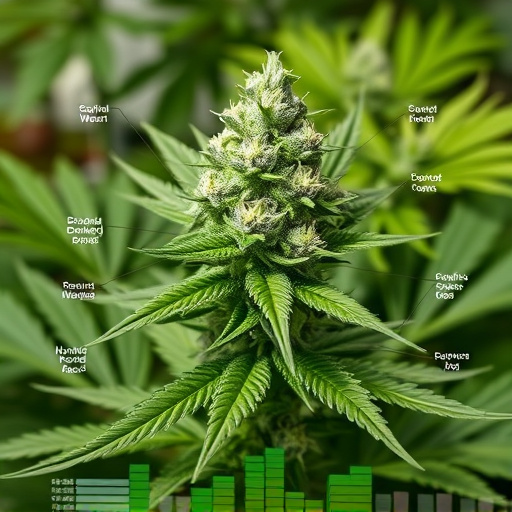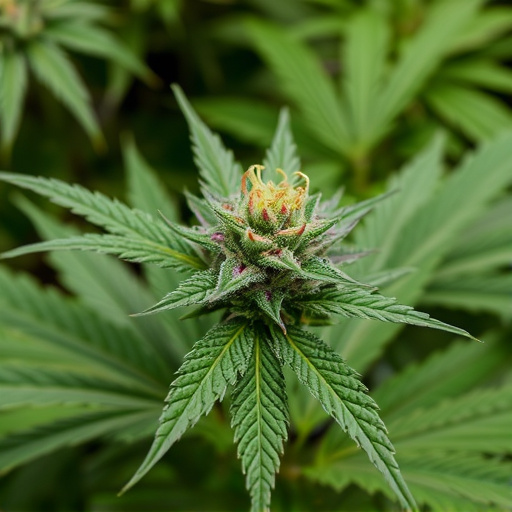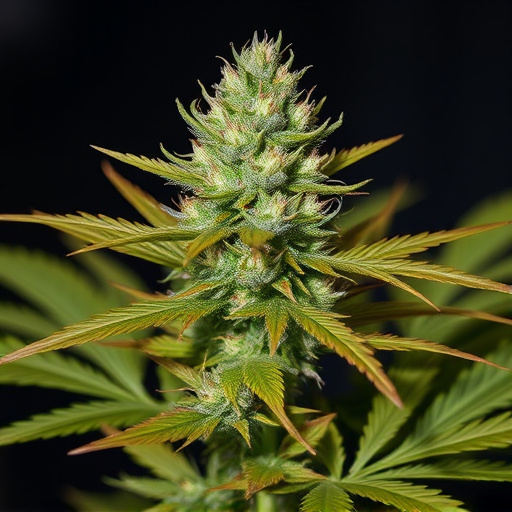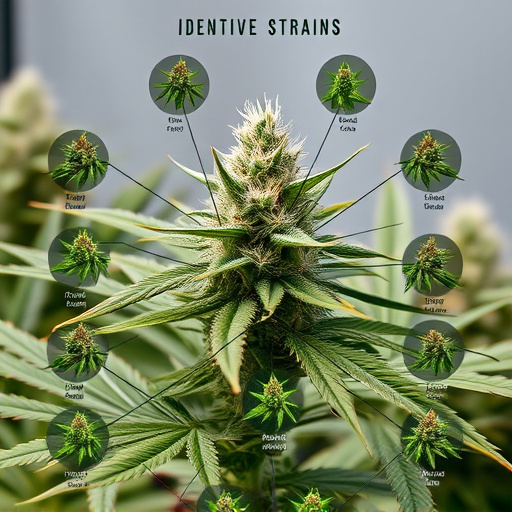Terpenes, aromatic compounds in cannabis, are key to understanding and identifying different strain profiles. They significantly influence flavor, aroma, and potential therapeutic effects, creating a unique sensory experience. Knowing terpene profiles helps consumers navigate the market, making informed choices based on desired effects and enhancing medical or recreational use through the entourage effect. This knowledge is crucial for selecting the best cannabis strains for specific conditions like insomnia, anxiety, or cognitive enhancement.
Terpenes, the aromatic compounds in cannabis, play a pivotal role in shaping both its flavor profile and therapeutic potential. Beyond their contribution to the distinctive ‘high’, terpenes influence how different cannabis strains affect users’ mental and physical well-being. Understanding these chemical compounds allows for informed choices when identifying cannabis strains, enhancing individuals’ ability to select varieties that cater specifically to their desired effects and preferences.
- Understanding Terpenes: The Chemical Compounds Shaping Cannabis Experience
- Identifying Cannabis Strains by Their Terpene Profile
- The Impact of Terpenes on Cannabis Therapeutic Benefits
Understanding Terpenes: The Chemical Compounds Shaping Cannabis Experience

Terpenes are a diverse group of aromatic compounds found in many plants, including cannabis. They play a significant role in shaping the unique characteristics and experiences associated with different strains. These chemical substances contribute to the distinct flavors, aromas, and even potential therapeutic effects that cannabis enthusiasts seek. By understanding terpenes, consumers can better appreciate the complexity of their favorite flowers and identify specific profiles that align with their preferences.
Each terpene offers a unique sensory experience, ranging from citrusy and fruity notes to earthy and pine-like scents. They interact with cannabinoids like THC and CBD, influencing how the body and mind respond to cannabis. This interaction is what scientists refer to as the entourage effect, where terpenes enhance or modify the overall effects of the plant. When identifying cannabis strains, knowing terpene profiles is essential for discerning the desired sensory journey and potential therapeutic benefits.
Identifying Cannabis Strains by Their Terpene Profile

Identifying cannabis strains starts and ends with its terpene profile—the diverse array of aromatic compounds responsible for the plant’s unique scent and flavor. Each terpene contributes to the overall bouquet, creating a distinct character that can hint at potential effects and experiences. For instance, myrcene, known for its earthy and musky notes, often correlates with indica strains, while limonene’s citrusy aroma is more commonly associated with sativas.
By analyzing these chemical signatures, cultivators, dispensers, and consumers alike can gain valuable insights into a strain’s genetic makeup and anticipated effects. This knowledge empowers informed choices, whether it’s for medical purposes or recreational use, ensuring the right terpene balance to cater to individual preferences and desired outcomes.
The Impact of Terpenes on Cannabis Therapeutic Benefits

Terpenes, the aromatic compounds found in cannabis, play a pivotal role in enhancing and modulating its therapeutic effects. These volatile oils are responsible for the distinct flavors and aromas associated with different cannabis strains, making them an essential element in identifying cannabis varieties. Beyond their contribution to the sensory experience, terpenes interact synergistically with cannabinoids, such as THC and CBD, to create what is known as the entourage effect.
This effect amplifies or modifies the plant’s therapeutic attributes, offering a more nuanced and potentially more effective treatment for various conditions. For instance, myrcene, a common terpene in cannabis, has sedative properties that can promote relaxation and alleviate insomnia. Meanwhile, limonene boosts mood and reduces anxiety, while pinene enhances cognitive function and provides potential respiratory benefits. Understanding the terpene profile of different strains allows users to select varieties best suited for their specific therapeutic needs, maximizing the potential benefits of cannabis.
Terpenes, the chemical compounds that give cannabis its unique aroma and flavor, play a pivotal role in shaping both the user experience and the therapeutic potential of different strains. By understanding terpene profiles, consumers can better identify cannabis strains tailored to their specific needs and preferences. The impact of these aromatic molecules extends beyond sensory pleasure, as they can influence the plant’s medicinal properties, making them an essential consideration for anyone navigating the diverse world of cannabis flowers.














